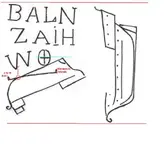Hola Oro amigo no apologies needed. I will continue the yarn about this mysterious fate of the Santa Ysabel (the Almiranta )
A much larger and costlier expedition had been planned by the early 1590s, after Mendaña had spent years courting favour in Madrid and Lima. he had Four ships and 378 men, women and children were to establish a colony in the Solomon Islands. However fate can be a fickle thing because the leaders of this voyage had “widely divergent personalities. Mendaña was again in command, accompanied by his wife Doña Isabel Barreto, her three brothers and a sister. Chief pilot was to be a young Portuguese navigator in Spanish service, Pedro Fernandes de Queirós. The main protagonist was an argumentative old soldier, Pedro Merino Manrique was chosen as camp master. Manrique caused problems before the fleet had even departed. Sadly it was a sign of things to come.
The four ships, San Gerónimo (the Capitana), the Santa Ysabel (the Almiranta), the smaller frigate Santa Catalina and the galiot San Felipe left Callao on 9 April 1595. Spirits were high in the first month, fifteen marriages being celebrated. Mendaña had Queirós prepare charts for his Captains that only showed Peru and the Solomon Islands. Such was the confidence of their project.
On 21 July 1595 the ships reached the Marquesas Islands, (named for the wife of the then viceroy of Peru, García Hurtado de Mendoza, 5th Marquis of Cañete) to be met by four hundred people in canoes. Although the Spaniards admired their “graceful shape” and “almost white” complexion, the relationship with the natives later deteriorated into bloodshed. When the expedition left two weeks later, Queirós estimated 200 Marquesans had been killed. It seemed the Spanish still had not learned its lessons.
Despite Mendaña’s confidence that the Solomon Islands were nearby, it was not until 8 September that they sighted land again, this time the island of Nendo, which they named "Santa Cruz" to east of the Solmon islands. The ship Santa Ysabel had disappeared, however, and despite searches by the two smaller vessels, it could not be found. What happened to this ship is a mystery of history?
The remaining 3 ships Arriving at what is now Graciosa Bay, a settlement was commenced. Relations with local islanders and their chief Malope started well, with food provided and assistance in constructing buildings. However, morale amongst the Spanish was low and sickness (almost certainly malaria) was rife. Manrique made himself such and pain and a threat to the leadership that he was murdered at the orders of, and in front of Mendaña, and shortly afterwards,
Malope the chief was killed by soldiers. Relations with the Islanders soon worsened. Wracked by internal divisions and an increasing death toll, the settlement began to fall apart. Mendaña himself died on 18 October 1595, leaving his wife as heir and governor, her brother Lorenzo as captain-general. On 30 October, the decision was made to abandon the settlement. When the three ships departed on 18 November 1595, forty-seven people had died in the space of one month.
Pedro Fernandes de Queirós is credited with bringing the San Gerónimo safely into the Philippines without the aid of charts, arriving in Manila Bay on 11 February 1596. Over fifty people died on the twelve-week voyage from Santa Cruz, in part due to the lack of food supplies and allegedly Doña Isabel’s refusal to share out her private store of food and water. The frigate (carrying Mendaña's body) disappeared during the voyage, while the galiot San Felipe arrived in the southern end of Mindanao several days later.
The Spanish Colonization of the Solomon islands as you can see was a total disaster.
Yet a great mystery was born for those tragic events, which was the mystery of the fate of the the Santa Ysabel that was open to much speculation? Many years ago a carving on some coral stone was found that might give a clue to fate of the vessel?
As you can see in the pictures below.
View attachment 1221194
Was it a clue to fate of Santa Ysabel? Or just meaningless scribble?
What you might find interesting the ship was carrying considerable money to trade with the Philippines as the colony got established.
Kanacki



 Latitude n longitude
Latitude n longitude



